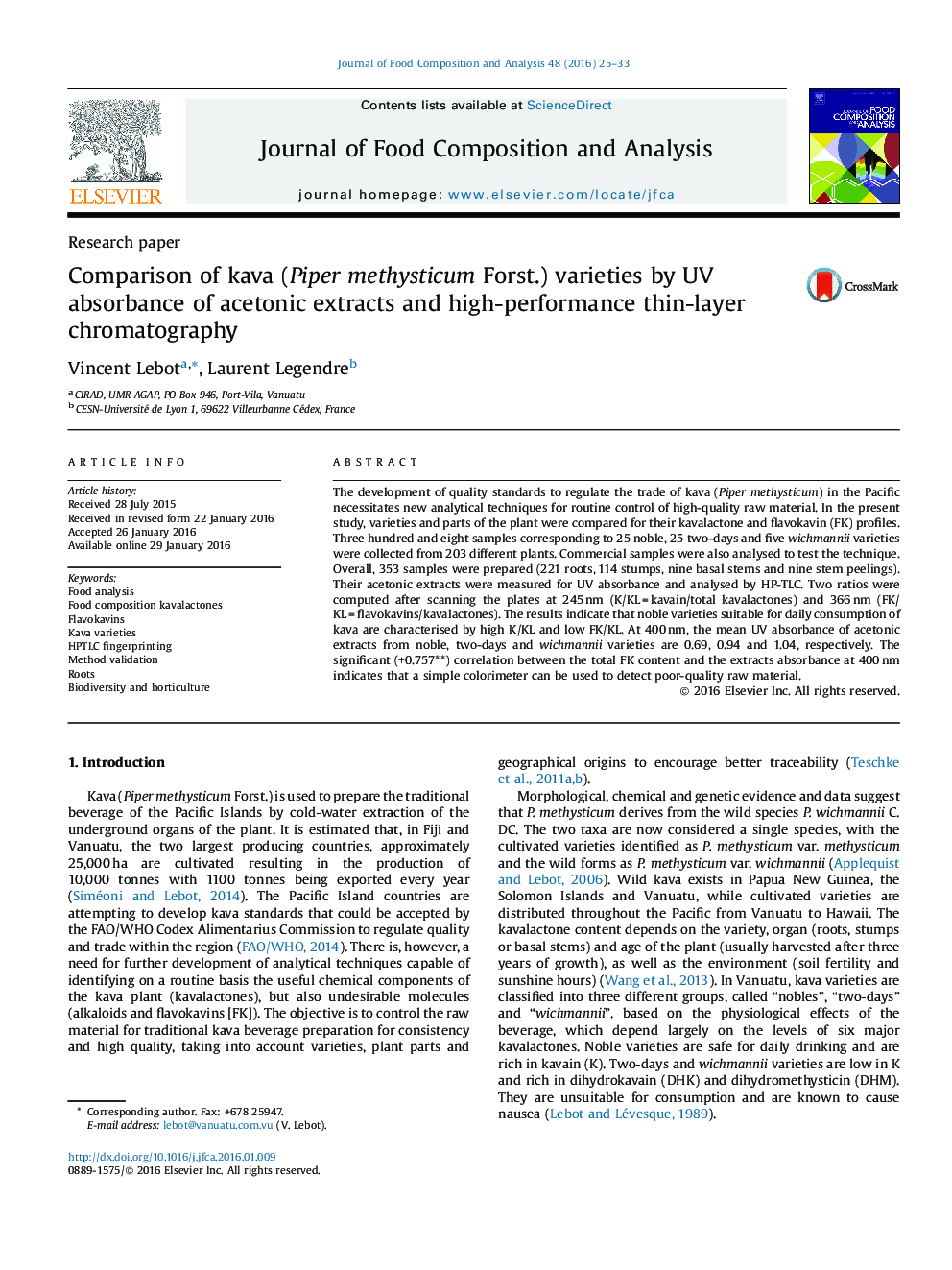| Article ID | Journal | Published Year | Pages | File Type |
|---|---|---|---|---|
| 1218126 | Journal of Food Composition and Analysis | 2016 | 9 Pages |
•The three groups of kava varieties are easily differentiated by their chemotypes.•Noble kava shows high kavain/total kavalactones, low flavokavin/kavalactone values.•Acetonic extracts are well differentiated by their UV absorbances.•A simple colorimetric test could be used to detect unsuitable raw material.•HP-TLC is a promising technique for the routine analysis of kava.
The development of quality standards to regulate the trade of kava (Piper methysticum) in the Pacific necessitates new analytical techniques for routine control of high-quality raw material. In the present study, varieties and parts of the plant were compared for their kavalactone and flavokavin (FK) profiles. Three hundred and eight samples corresponding to 25 noble, 25 two-days and five wichmannii varieties were collected from 203 different plants. Commercial samples were also analysed to test the technique. Overall, 353 samples were prepared (221 roots, 114 stumps, nine basal stems and nine stem peelings). Their acetonic extracts were measured for UV absorbance and analysed by HP-TLC. Two ratios were computed after scanning the plates at 245 nm (K/KL = kavain/total kavalactones) and 366 nm (FK/KL = flavokavins/kavalactones). The results indicate that noble varieties suitable for daily consumption of kava are characterised by high K/KL and low FK/KL. At 400 nm, the mean UV absorbance of acetonic extracts from noble, two-days and wichmannii varieties are 0.69, 0.94 and 1.04, respectively. The significant (+0.757**) correlation between the total FK content and the extracts absorbance at 400 nm indicates that a simple colorimeter can be used to detect poor-quality raw material.
